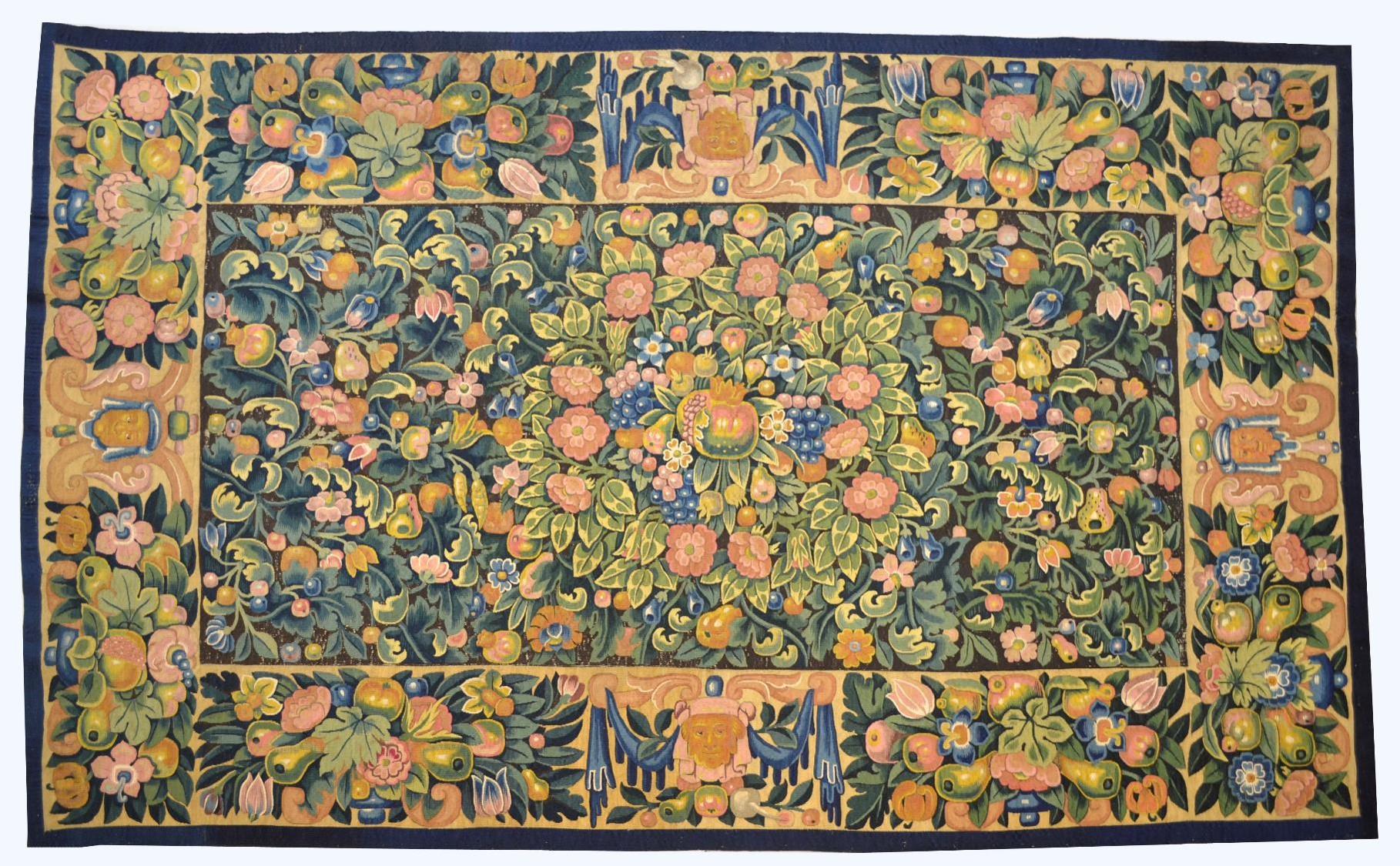Today we have another guest entry by Katy Smith, one of the V&A’s Textile Conservators who has been doing sterling work on objects that will be displayed in the new galleries.
The smallest of all the tapestries being prepared for the Europe galleries is a Dutch ‘table carpet’ (V&A T.279-1927). The name is deceptive, technically it is definitely a tapestry, and was made in the northern Netherlands between 1620 and 1650. The woven design of flowers and fruit is bordered with grotesque masks, in brightly coloured wool.

The tapestry would be removed from the table before dining, and was clearly well looked after, because over 350 years later, its condition is remarkably good. The first task when preparing it for conservation was to remove the old lining, allowing us to see the reverse side of the tapestry for the first time in decades. The colours on the front are only slightly faded compared to those on the back

The tapestry was scrutinised to assess the amount of conservation work required. There were several small holes, and many areas of exposed warp threads, all in the areas of dark brown wool. The darker colours are often susceptible to damage, the dye having an iron mordant, which degrades, taking the wool fibres with it. An estimate of 280 hours (about 8 weeks) work was proposed in order to make the tapestry safe to display, and to ensure its long-term survival.

The tapestry was put onto a large roller frame for conservation, in the direction of the warp threads (that’s sideways). A large linen patch was secured to the underside, and all of the conservation stitching done through this, in sections of 25cm at a time, making a large task seem much more manageable. Smaller linen patches were added at the edges and in the border areas, where needed.

All of the damaged areas were stitched down onto the linen patch beneath, with three main techniques.
- Warp-faced couching – that’s many, many rows of tiny stitches, over one warp thread, and under the next, all in a matching shade of wool thread.
- Re-warping – that’s replacing the warp threads where they have snapped, or broken away completely leaving a hole in the tapestry. With the new wool warp threads secured, they are couched as above, to re-integrate the design.
- Support lines – a zig-zag stitch using wool thread to hold the edges of the linen patch, and any loose areas, to the tapestry

Reverse of tapestry after conservation © Victoria and Albert Museum, London With all the conservation stitching complete, the final task was to give the tapestry a new lining. This loose cotton lining doesn’t provide support, but acts as a dust cover, and is hand-stitched in place around all four edges, and at intervals across the width. To enable the tapestry to hang in the display case, a length of wide Velcro has been secured to the top edge by hand.

Reverse of tapestry with lining and Velcro – ready for hanging in the new galleries! © Victoria and Albert Museum, London

